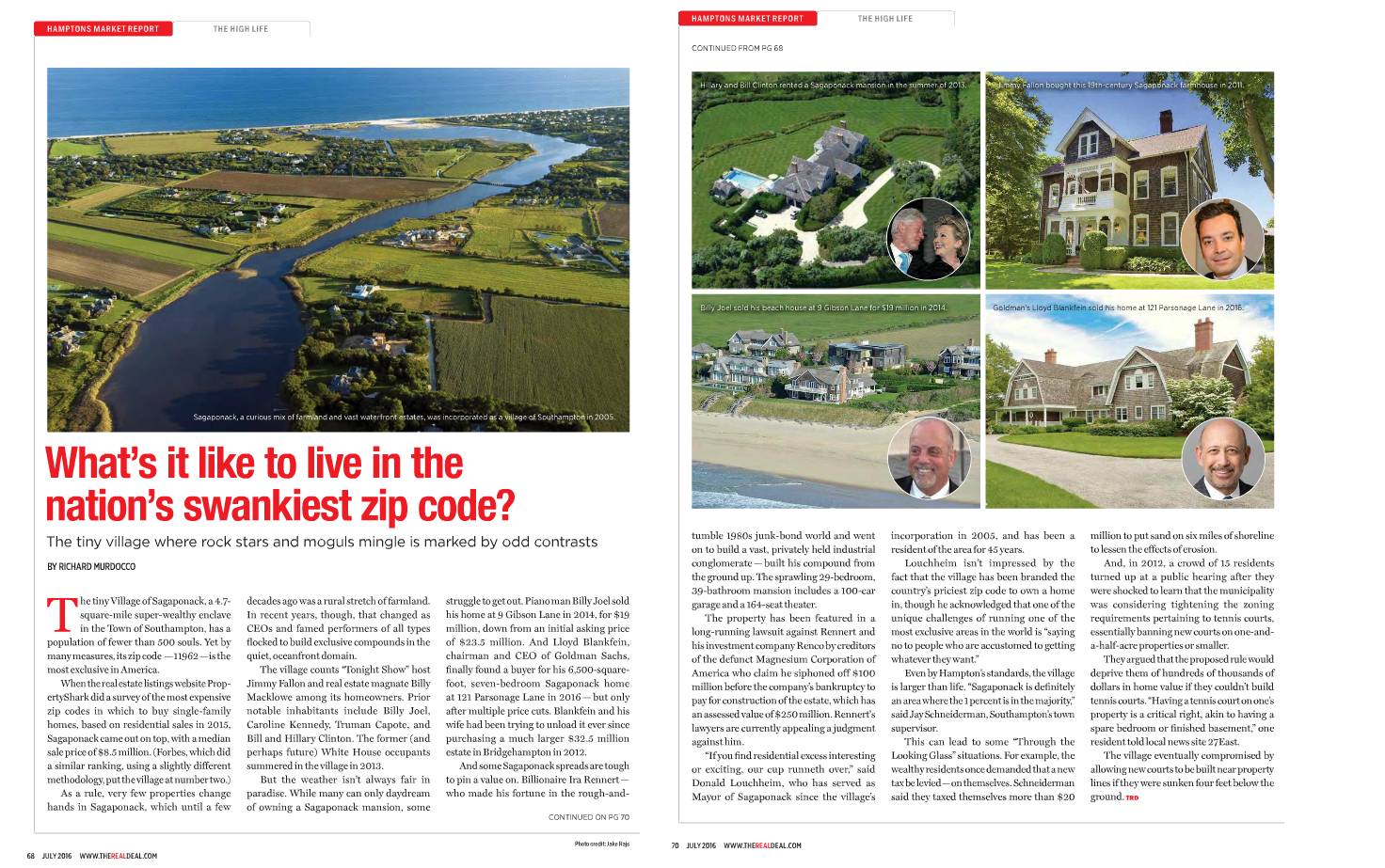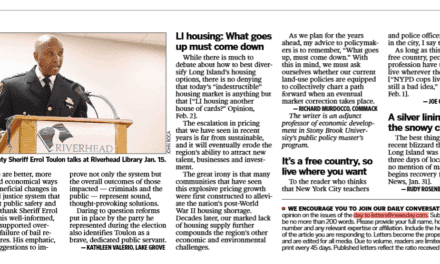The following was originally published in the July 2016 Hamptons Special Edition of The Real Deal. You can read the original here.
The tiny Village of Sagaponack, a 4.7-square-mile super-wealthy enclave in the Town of Southampton, has a population of fewer than 500 souls. Yet by many measures, its zip code — 11962 — is the most exclusive in America.
When the real estate listings website PropertyShark did a survey of the most expensive zip codes in which to buy single-family homes, based on residential sales in 2015, Sagaponack came out on top, with a median sale price of $8.5 million. (Forbes, which did a similar ranking, using a slightly different methodology, put the village at number two.)
As a rule, very few properties change hands in Sagaponack, which until a few decades ago was a rural stretch of farmland. In recent years, though, that changed as CEOs and famed performers of all types flocked to build exclusive compounds in the quiet, oceanfront domain.
The village counts “Tonight Show” host Jimmy Fallon and real estate magnate Billy Macklowe among its homeowners. Prior notable inhabitants include Billy Joel, Caroline Kennedy, Truman Capote, and Bill and Hillary Clinton. The former (and perhaps future) White House occupants summered in the village in 2013.
But the weather isn’t always fair in paradise. While many can only daydream of owning a Sagaponack mansion, some struggle to get out. Piano man Billy Joel sold his home at 9 Gibson Lane in 2014, for $19 million, down from an initial asking price of $23.5 million. And Lloyd Blankfein, chairman and CEO of Goldman Sachs, finally found a buyer for his 6,500-square-foot, seven-bedroom Sagaponack home at 121 Parsonage Lane in 2016 — but only after multiple price cuts. Blankfein and his wife had been trying to unload it ever since purchasing a much larger $32.5 million estate in Bridgehampton in 2012.
And some Sagaponack spreads are tough to pin a value on. Billionaire Ira Rennert —who made his fortune in the rough-and-tumble 1980s junk-bond world and went on to build a vast, privately held industrial conglomerate — built his compound from the ground up. The sprawling 29-bedroom, 39-bathroom mansion includes a 100-car garage and a 164-seat theater.
The property has been featured in a long-running lawsuit against Rennert and his investment company Renco by creditors of the defunct Magnesium Corporation of America who claim he siphoned off $100 million before the company’s bankruptcy to pay for construction of the estate, which has an assessed value of $250 million. Rennert’s lawyers are currently appealing a judgment against him.
“If you find residential excess interesting or exciting, our cup runneth over,” said Donald Louchheim, who has served as Mayor of Sagaponack since the village’s incorporation in 2005, and has been a resident of the area for 45 years.
Louchheim isn’t impressed by the fact that the village has been branded the country’s priciest zip code to own a home in, though he acknowledged that one of the unique challenges of running one of the most exclusive areas in the world is “saying no to people who are accustomed to getting whatever they want.”
Even by Hampton’s standards, the village is larger than life. “Sagaponack is definitely an area where the 1 percent is in the majority,” said Jay Schneiderman, Southampton’s town supervisor.
This can lead to some “Through the Looking Glass” situations. For example, the wealthy residents once demanded that a new tax be levied — on themselves. Schneiderman said they taxed themselves more than $20 million to put sand on six miles of shoreline to lessen the effects of erosion.
And, in 2012, a crowd of 15 residents turned up at a public hearing after they were shocked to learn that the municipality was considering tightening the zoning requirements pertaining to tennis courts, essentially banning new courts on one-and-a-half-acre properties or smaller.
They argued that the proposed rule would deprive them of hundreds of thousands of dollars in home value if they couldn’t build tennis courts. “Having a tennis court on one’s property is a critical right, akin to having a spare bedroom or finished basement,” one resident told local news site 27East.
The village eventually compromised by allowing new courts to be built near property lines if they were sunken four feet below the ground.












